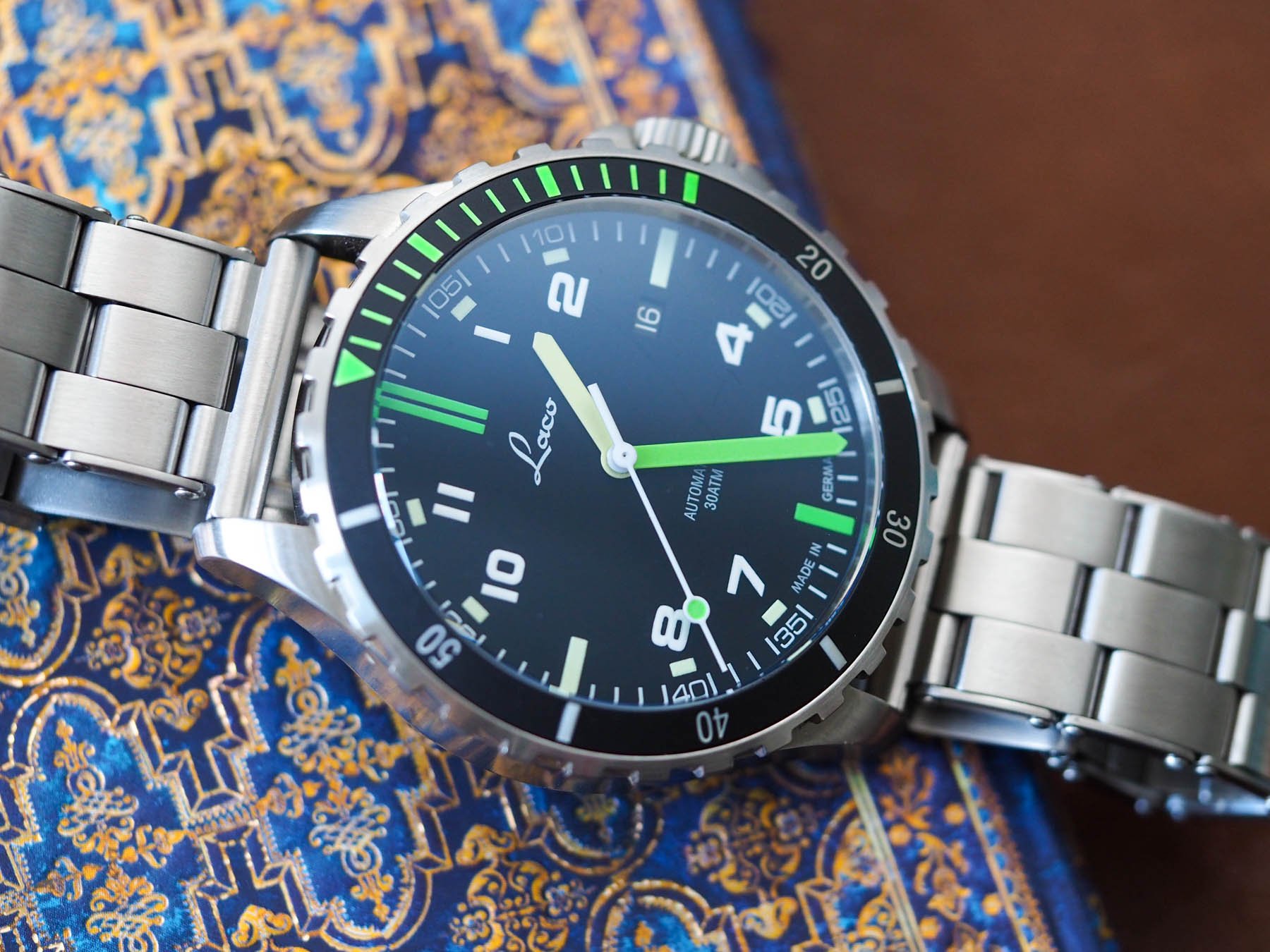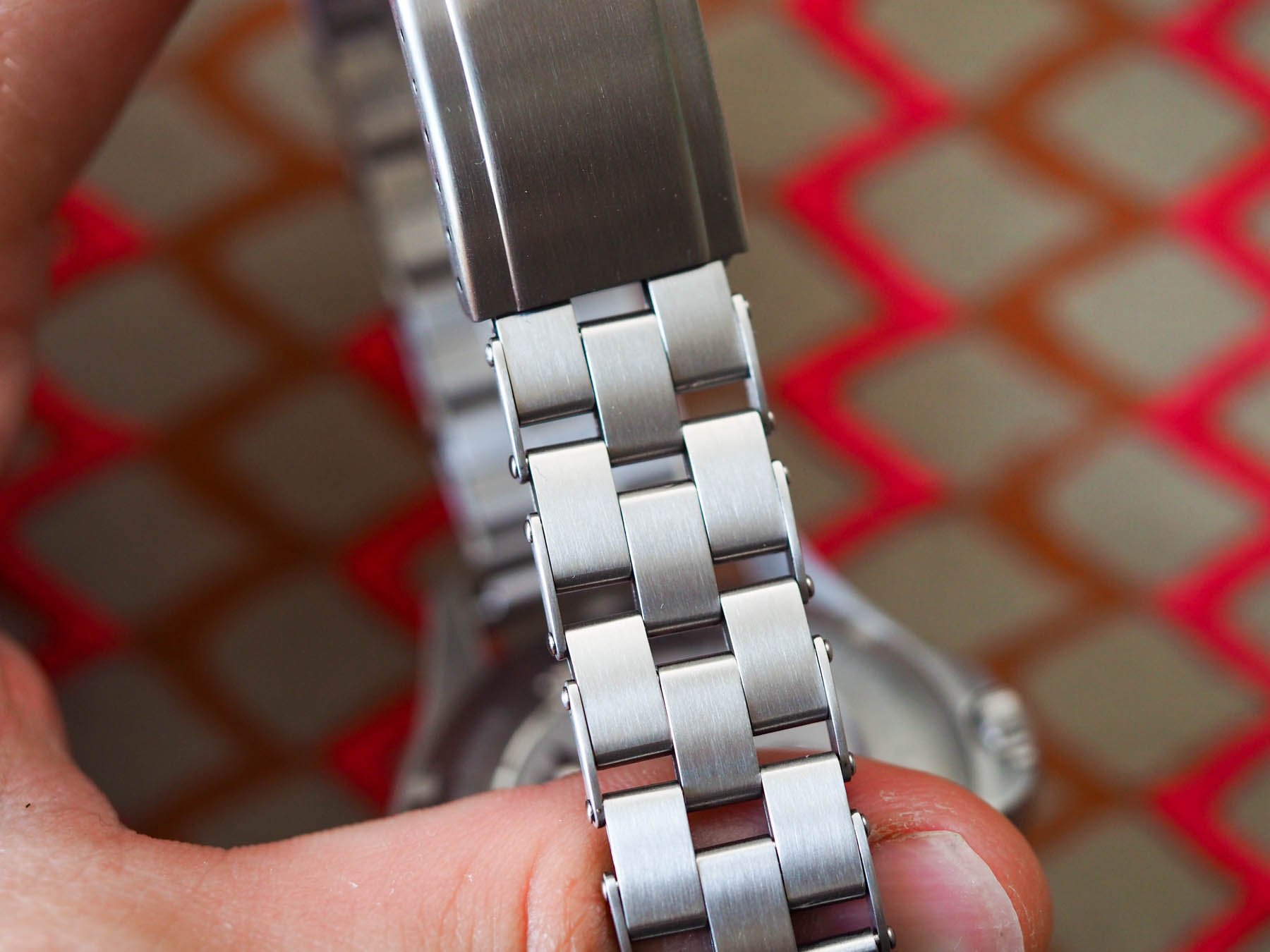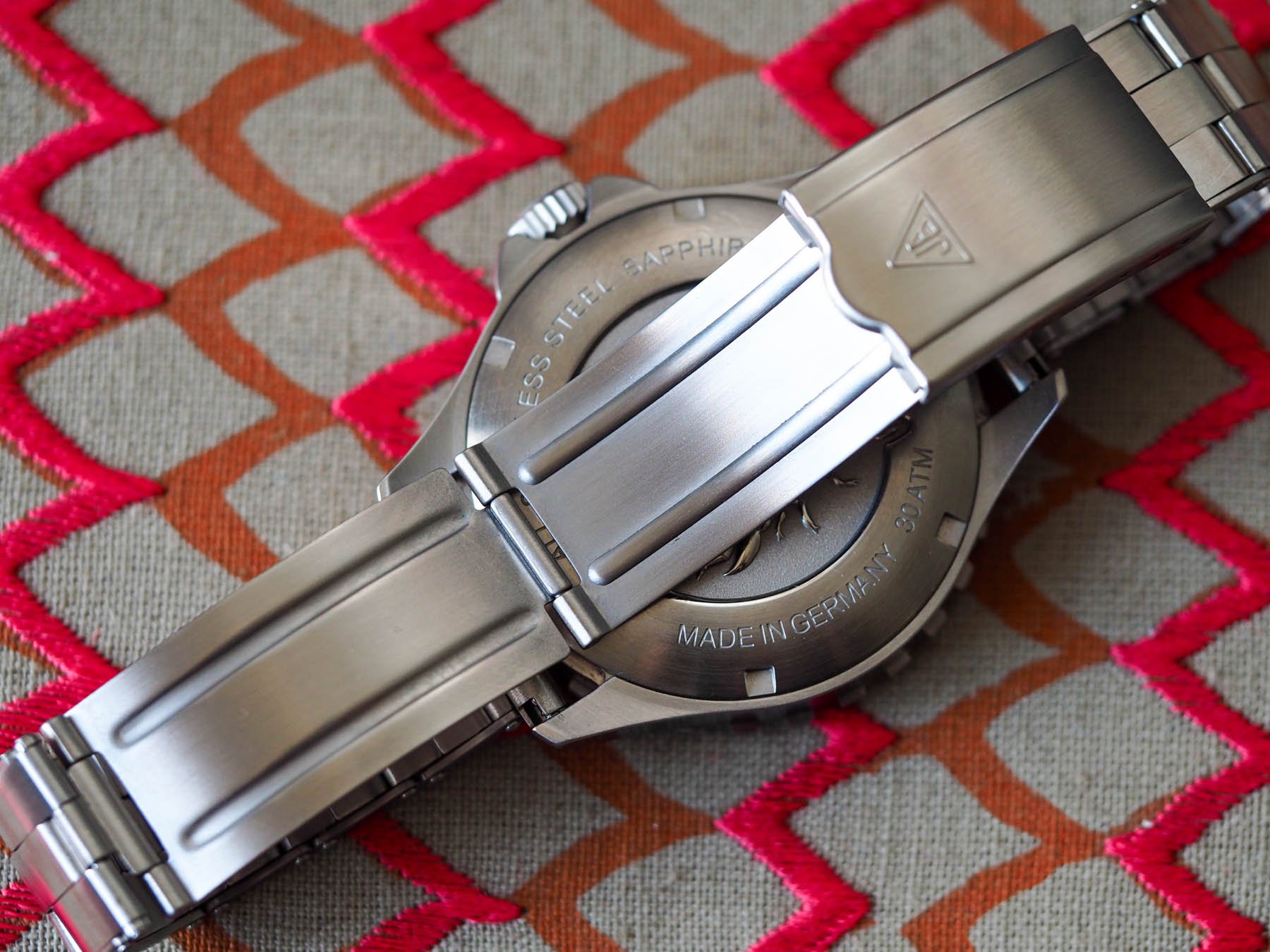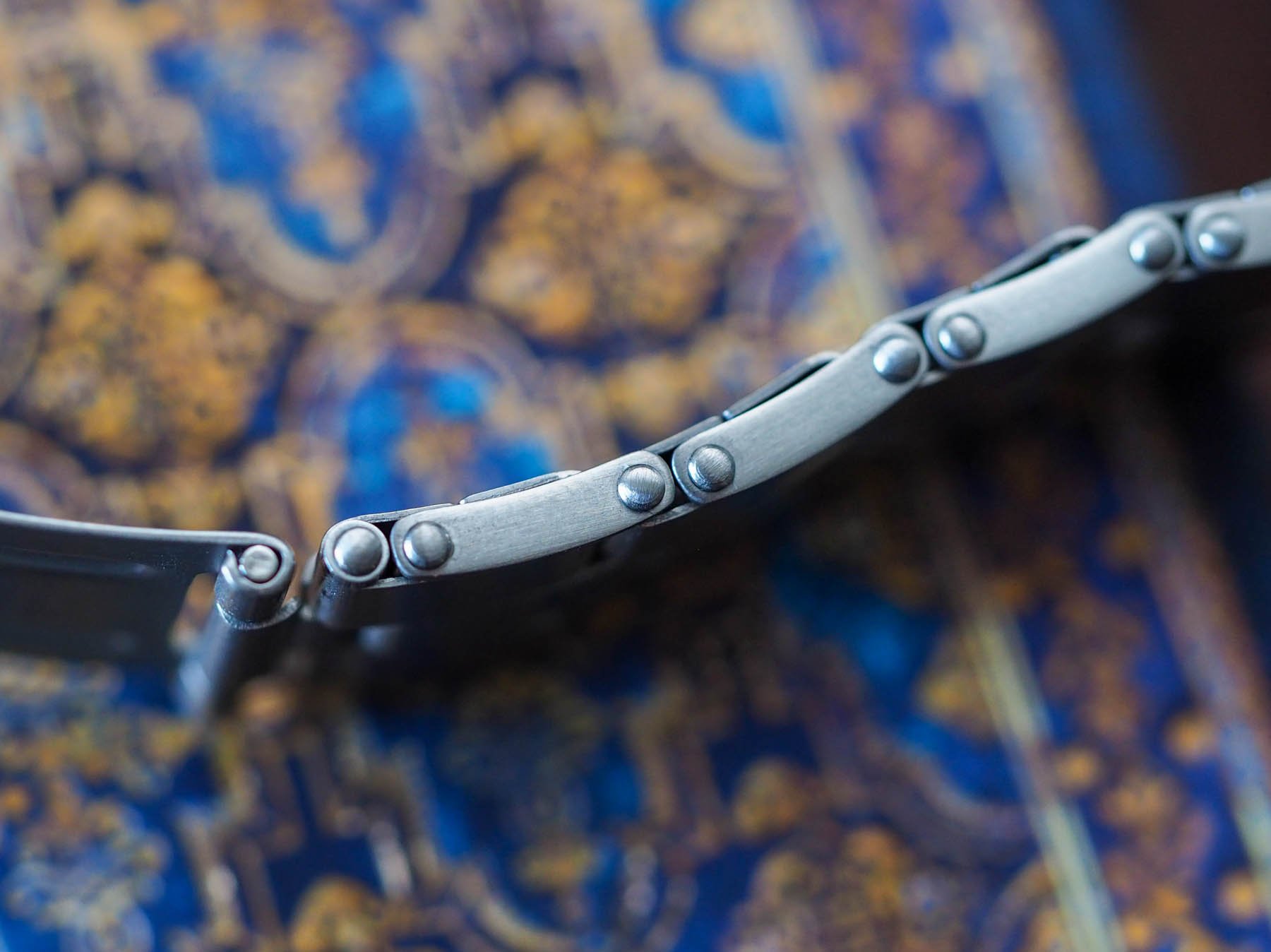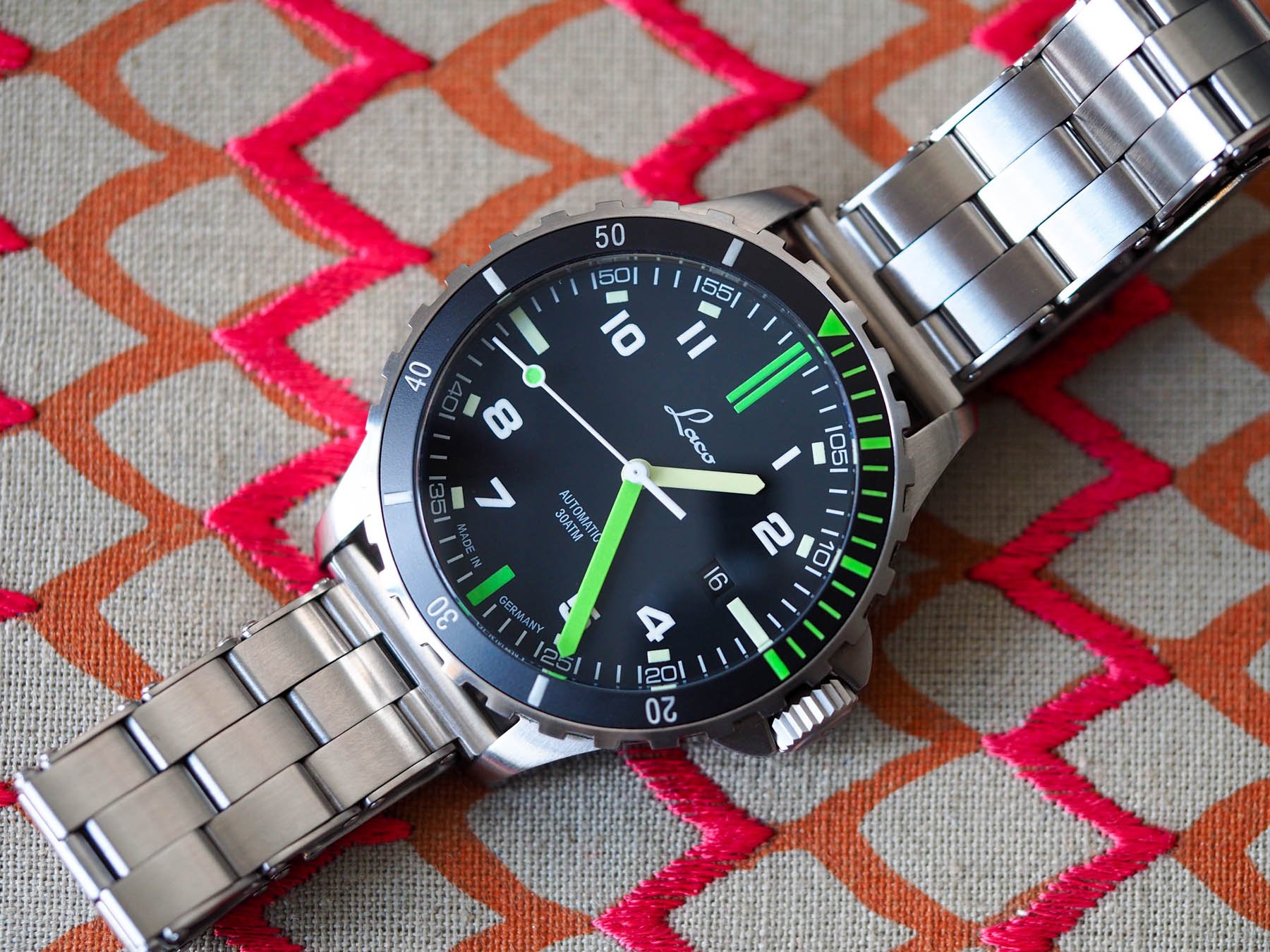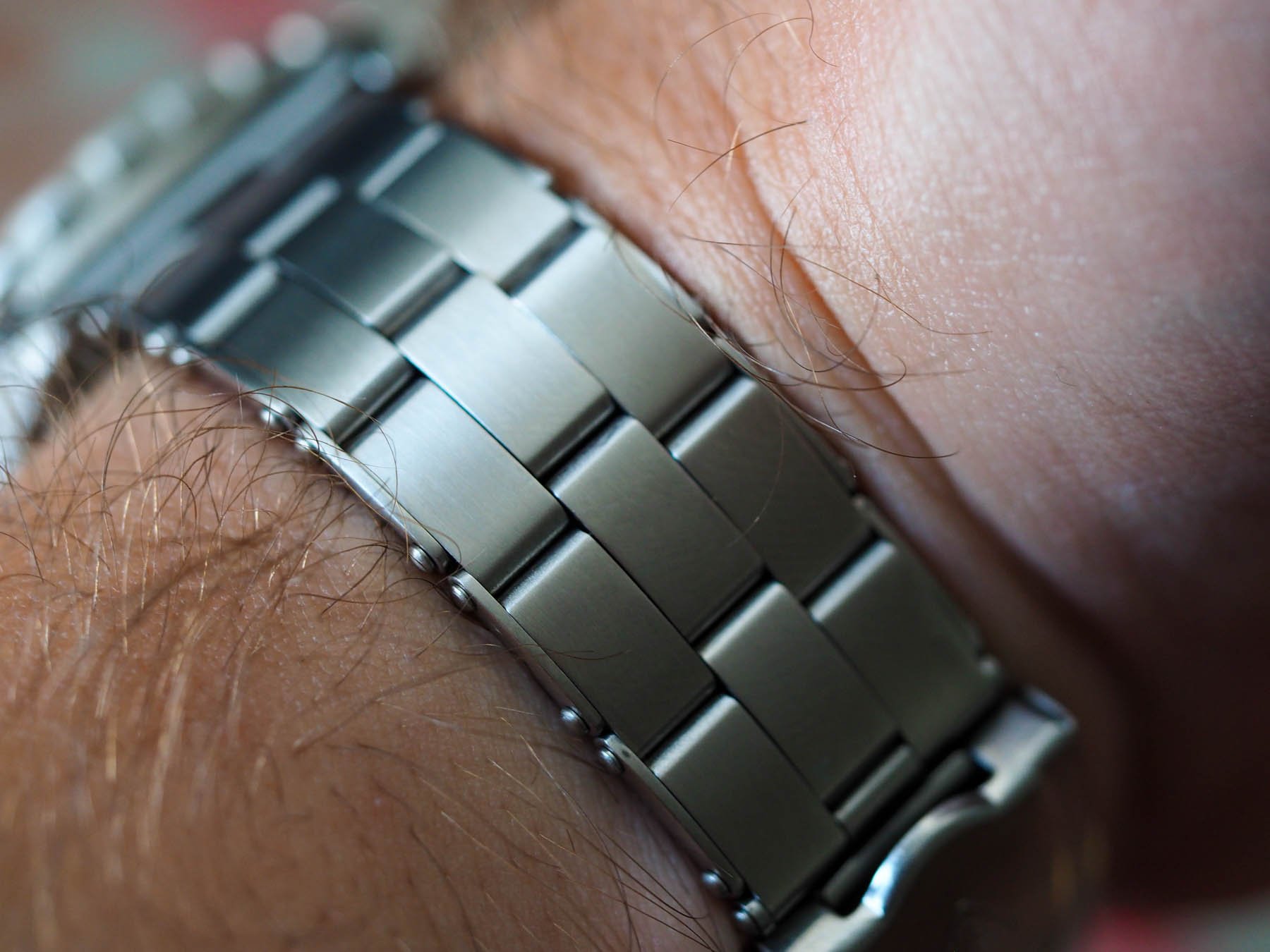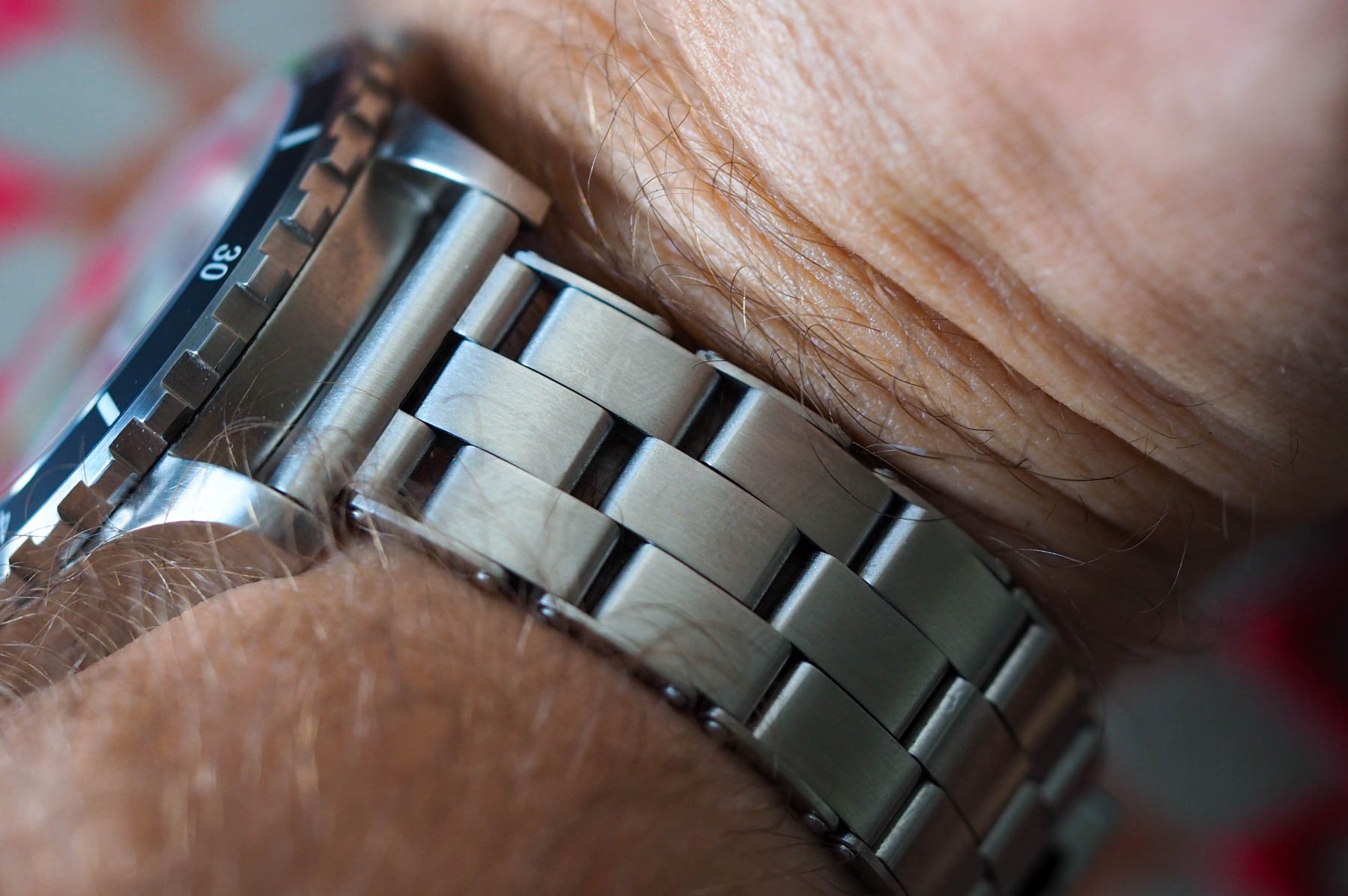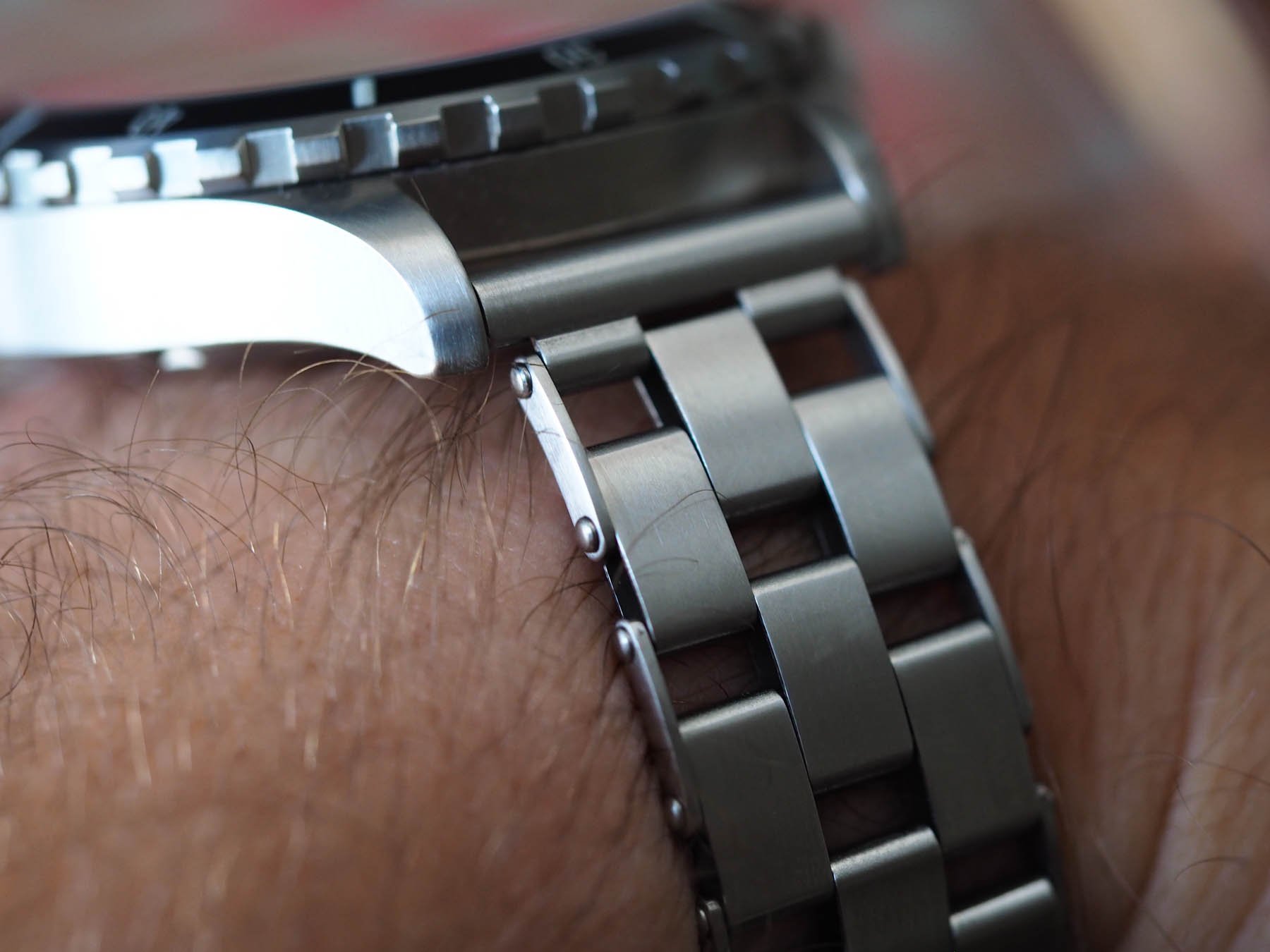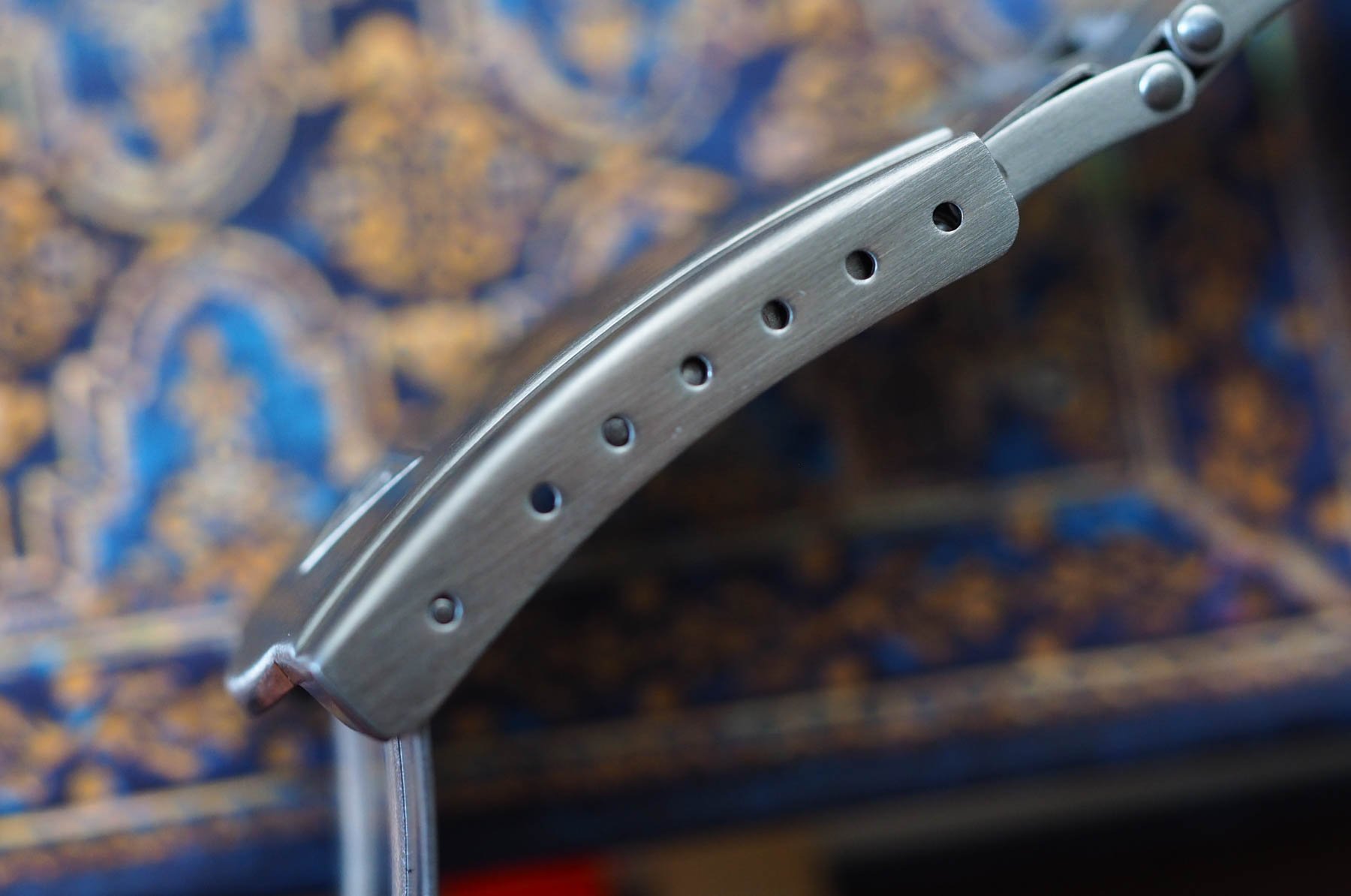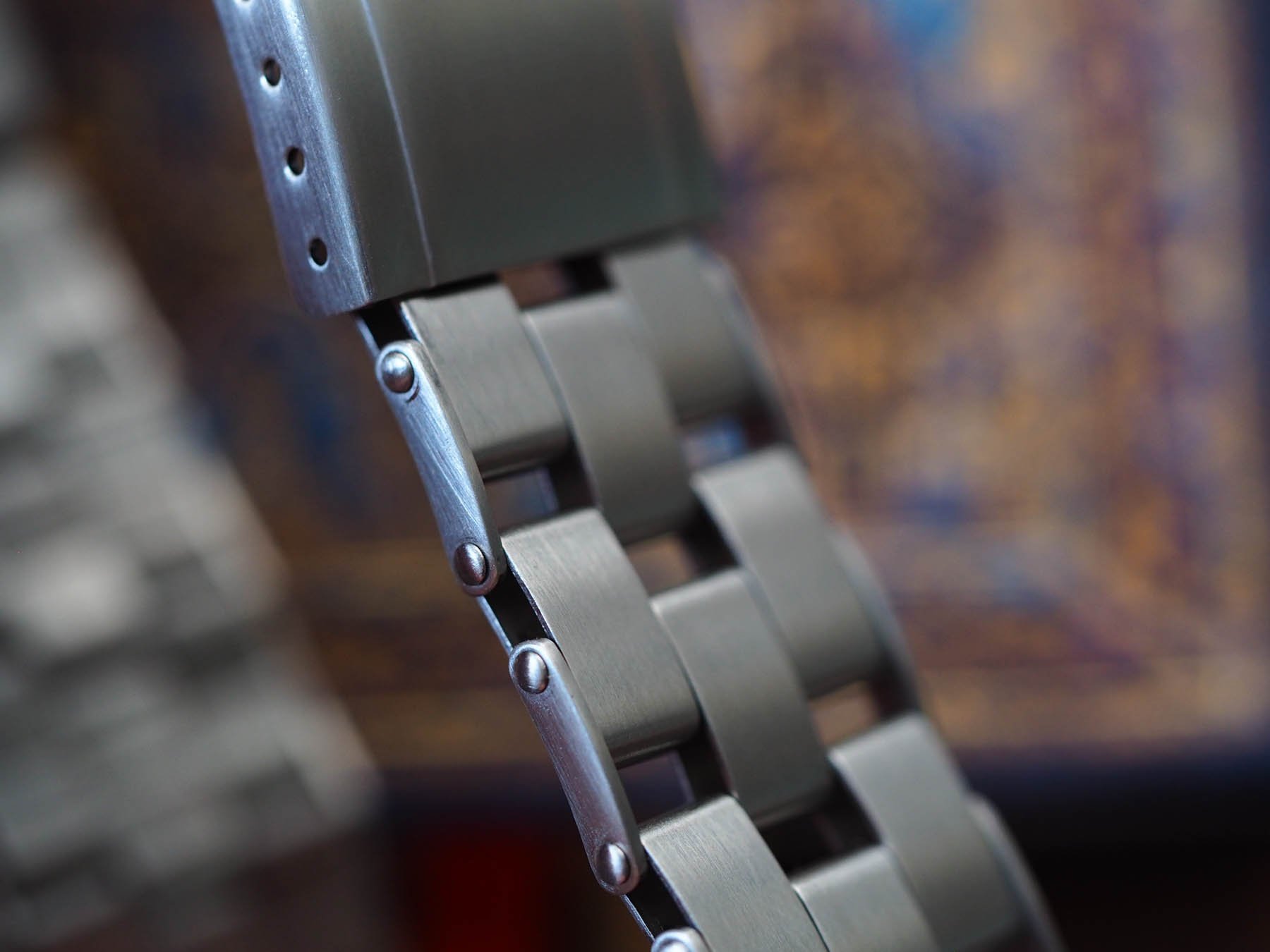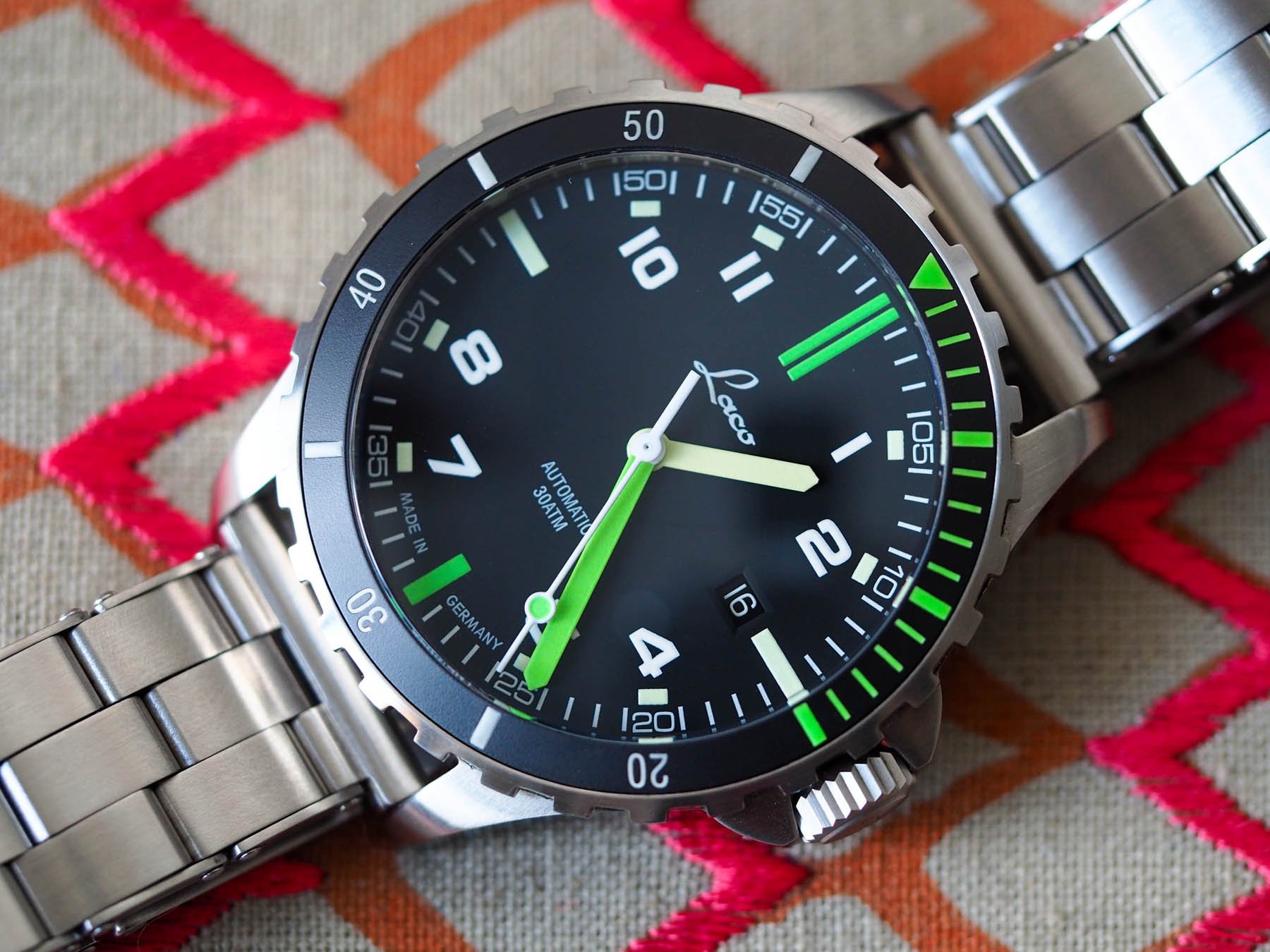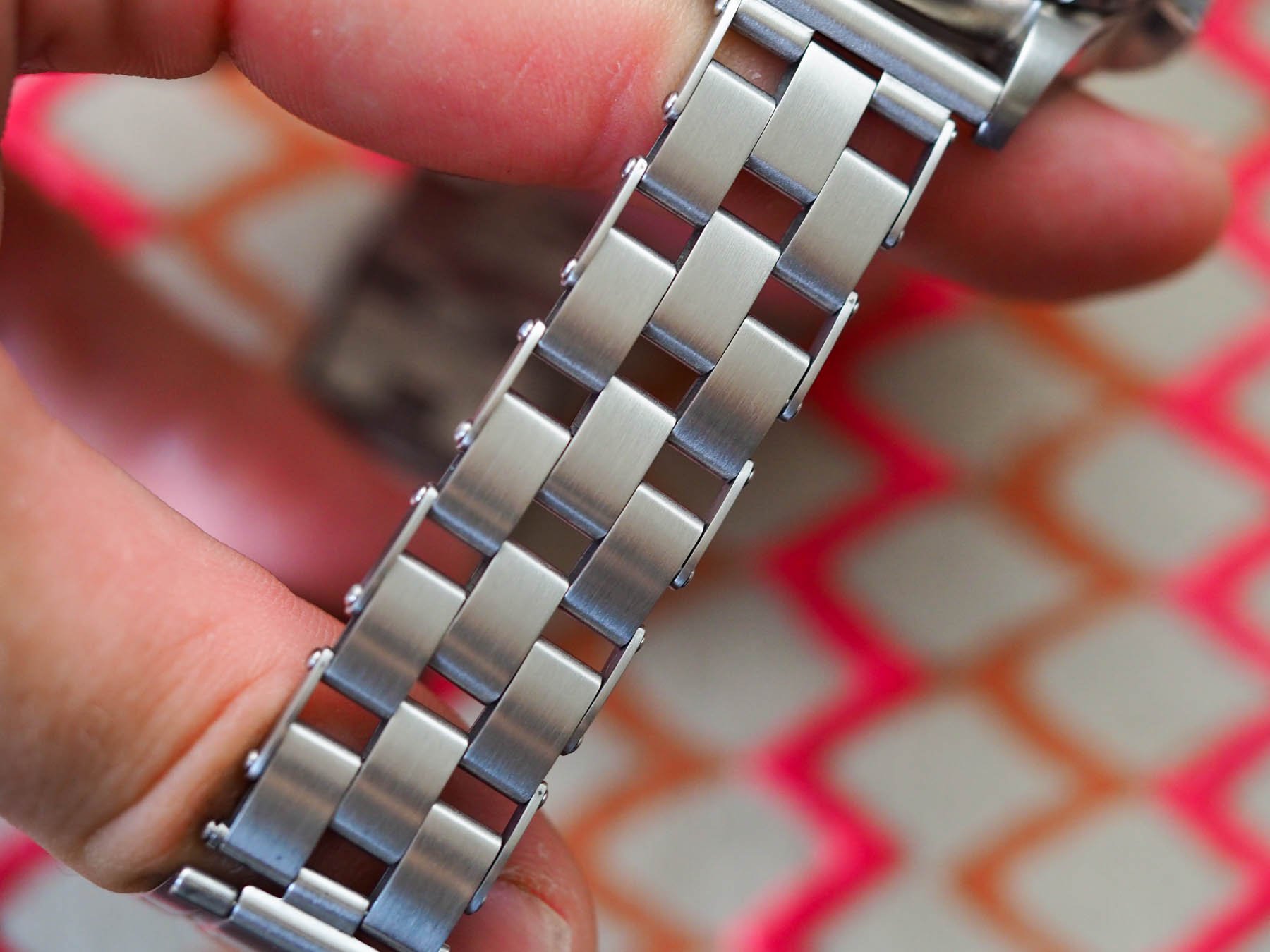The Forstner Stretch Rivet Is A Neat Vintage Option For Warmer Days And A Wild Summer
Back in March, I reviewed the Forstner Rivet bracelet. A version which, as you may remember, features fixed links throughout. An exception is made at the final link on the 12 o’clock side of the. I praised that single link as providing the fixed-link version of this vintage-inspired rivet bracelet with the best of both worlds. Now, I’ve had more of a chance to wear the full-stretch version (a model featuring the same stretch technology in every link). Which one did I prefer and which one (as a fuzzy little watch reviewer) claimed more of my wrist hair than the other?
Hair snagging is a big deal when it comes to bracelet style and, probably, more importantly, the finishing quality. It’s one of those painful truths you realize when you’ve worn a lot of different straps and bracelets over the years: quality matters, and sometimes that means shelling out the big bucks for it.
Cheap, poorly-machined bracelets tend to snag. Well-brushed or even polished edges are less likely to. Therefore, my regular advice would be to concern yourself less with the style of the bracelet and more with its quality. Luckily, you get that high quality here for a veritable song.
Affordable care for your wrist
Forstner bracelets retail at $125 a throw. The longer this company exists and the more its profile and reputation continues to grow, the more I find the price to offer amusingly good value. It still feels like the best-kept secret in the industry, but that can’t possible be true, given how often I blather on about it. Within their growing catalog, I still have my favorites. Sticking to my guns, I believe that the original JB Komfit is yet to be topped. However, I find experimenting with these other styles on watch heads that demand something a little more full-blooded than the wispy 1950s/60s-style mesh of the Komfit a satisfying way to pass the time.
Years ago, when I was of humbler means, I balked at spending more than £10 or £15 on a watch strap. Anything approaching £20 was seen as a true luxury. It seems laughable now, but following my training at the British School of Watchmaking I was in pretty dire financial straits. Up to my eyeballs in debt, I was totally without the means to buy nice things (can anyone else hear the sound of a violin in the distance?). The thought of spending $125 on a bracelet, let alone a leather strap would have knocked me sick. Nowadays, spending three figures on leather straps seems like the only appropriate thing to do, especially when the watch in question retails for several thousand.
Logically then, $125 for a bracelet now seems too little. Had I not spent months with these authentic vintage recreations I wouldn’t have never believed it, but they are not only solidly made, but they are getting better all the time. I spoke to Forstner last week about the plans for the remainder of the year, as I was eager to get more of the products in for review before Christmas (as a watch lover with lots of watch-loving friends, these bands will be high on my Christmas present shopping list). What he told me got me very excited: new styles, further refinements, and a real surprise from the brand all await us.
Right now, though, the stretch rivet is king
Thinking forward to Christmas is cool and all, but right now we’re going through the height of summer. All that is yet to come this year from Forstner is seasonally appropriate, but perhaps the most (or second most if you’re a “creature of Komfit” like me) suitable option for the warmer weather we’re currently having in the northern hemisphere is the stretchy rivet bracelet.
Why is that? Well, as you probably noticed, throughout the summer months, your wrist tends to expand due to the spike in temperature. It doesn’t have to expand by much for your watch to became quite uncomfortable. Unlike leather, rubber, or even NATO straps, metal bracelets are often not so easy to adjust on the fly. Bracelet tightness can be quite stressful, resulting in sweat and discomfort. In some extreme cases even leading to blood flow being restricted, which can in turn cause rashes and itchyness. Even though the fixed link version still has one stretch link that is, already on its own, perfectly capable of accommodating any realistic expansion, the full stretch version is much better suited to the task.
If I’m being honest, I did find this one to snag my arm hair on occasion, but not so often that I regarded it as a problem. I don’t think that this should come as a surprise. I’m sure that even the priciest bracelets in the world would show a snagging differential between a fixed and a stretchy version of the same bracelet. However, the benefit of the full stretch was twofold: the aesthetics were better (in my opinion) and the comfort was genuinely increased.
What’s the most important thing to you?
The latter point — the comfort — is probably the top concern in this discussion, while the former point — the aesthetics — is somewhat subjective. Let’s think about the comfort: that isn’t so hard to understand. Firstly, there is just so much more flexibility in the full stretch that even though the majority of the bracelet’s potential growth is unnecessary, the bracelet reacts a bit more “intuitively” to your wrist’s shape and the way in which it is expanding or flexing. Rather than all of the expansion pressure (so the load on the stretchy components of the bracelet) being placed on one single link, it is shared across them all. This does feel a lot more organic and I like it.
The way the links expand also feeds into the aesthetics. Now here’s the kicker: I love ladder bracelets (and can’t wait for Forstner to release one someday) and so I do like those gaps appearing between links. I love the way it looks — it’s that simple. If, however, you do not like your rivet bracelet to occasionally do a half-baked impression of a ladder bracelet, you might not enjoy the even expansion across all links in the same way I do.
The fit
Lastly, it’s pretty easy to get a perfectly comfortable fit with this full stretch rivet bracelet, just because of how reactive it is. However, unless your wrist is between 6.25 and 8 inches, steer clear. It must be said that the Forstner website does warn that anyone with a wrist over 7.25 inches should expect a snug fit. My 6.5-inch wrist is almost perfect for this bracelet but I would say the optimum size is at around 7 inches. Why? Because you can’t adjust the links themselves, you have to use the micro-adjustment on the buckle. Now, there are six holes, but having to use five of them as I did is not ideal. However, the resulting fit means the full stretch looks like a solid bracelet when my wrist is at its normal size and barely has to flex when it expands on a warmer day.
The solid link option fits comfortably all the way up to 8 inches and can, of course, be micro-adjusted at the buckle for a true fit. This version is noticeably heavier than the stretch version, which boasts a cool/annoying (depending on your perspective) rattle when it’s off the wrist. Also, the fixed link version comes in 18mm, 19mm, 20mm, 21mm, and 22mm lug widths, while the model reviewed here is only available in 18/19/20mm.
For me, having tested the solid link on a 22mm lug width, I have to say the 20mm seems the absolute optimum here. However, both the 18 and 19mm are aesthetically superior to the 22mm (especially if the 22mm lugs of the watch in question give way to a diameter as hulking as the Seiko I tried my fixed link on).
Conclusion
The Forstner Stretch Rivet bracelet has authentic vintage style and all the quality hallmarks we’ve come to expect from the brand. At $125 I think its an absolute steal (as I made clear above). My preference for this 316L hypoallergenic stainless steel band is the 20mm lug width version (pictured here), which has (as all models do regardless of lug width) an 18mm central portion that does not taper at all toward the clasp. I think the slight (and only slight) step down in width from the lugs to the central portion of the bracelet is what completes this classic look, and I would wholeheartedly encourage you to give it a go on your favorite vintage diver that’s perhaps overdue a treat. Learn more about Forstner here.

